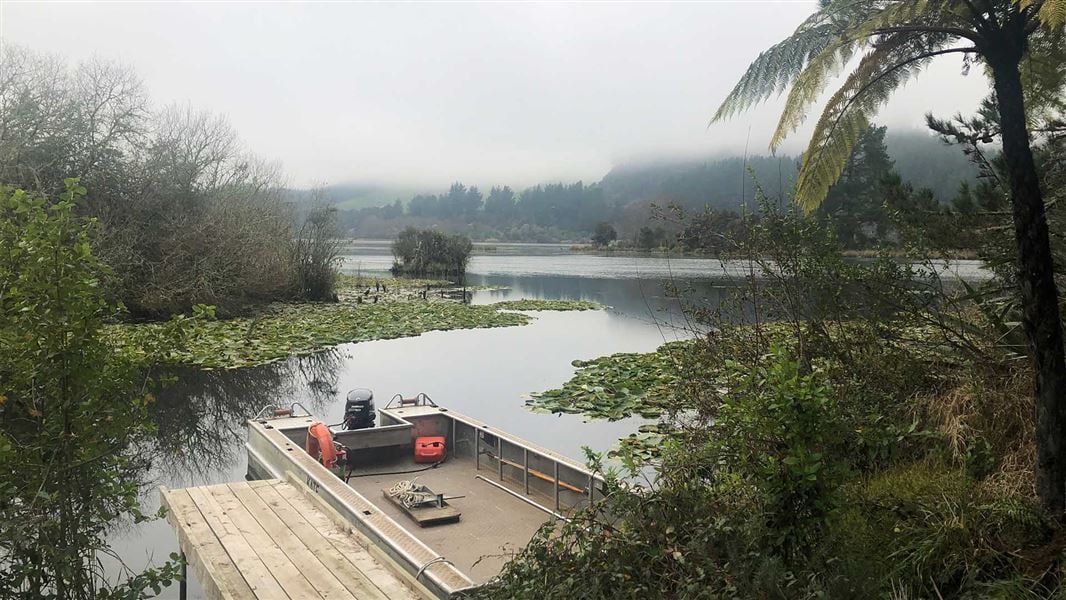Archived content: This media release was accurate on the date of publication.
Date: 23 June 2020
The lake is one of the largest hydroelectric dam reservoirs on the Waikato River, and sits adjacent to Mercury’s Whakamaru power station. Until now, koi carp have never been reported in this lake, although koi carp were confirmed last year in Lake Karapiro.
Koi carp suck up sediment and spit it out while removing insects, worms and snails, dislodging native water plants and making the water murky.
DOC advised local iwi Raukawa of the possible sighting and the subsequent investigation.
Staff from DOC, Waikato Regional Council, Mercury and Fish & Game were involved in a two-phase response to information supplied by an experienced koi carp fisherman.
“First we are ascertaining whether koi carp are in the lake. Then, as a proactive measure, we need to ensure the pest fish are not transported either deliberately or inadvertently into other high-value conservation waterways,” says Kerry Bodmin, DOC Freshwater Biosecurity Coordinator and leader of the Lake Whakamaru investigation.
“We are alarmed about this possible sighting of a very invasive pest species,” Kerry Bodmin says of the potential incursion. “The concern is koi carp could be spread to Lake Taupo and other waterways of high conservation value.”
Net fishing and two experimental techniques were implemented as part of the investigation – the use of a drone to spot potential koi carp, and environmental DNA (eDNA) testing where water samples are taken to detect any koi carp DNA.
Kerry Bodmin says the use of the drone is still in a development phase, but it looks to be highly effective with positive results to date.
Waikato Regional Council led the eDNA sampling. Nineteen water samples were collected around the lake and sent to a lab for testing. Results are anticipated in 10 to 14 days.
A team led by DOC, in a boat supplied and skippered by Mercury and supported by Matt Osborne from Fish & Game, set nets near Dunham’s Reserve, the location of the sighting. Nets were set away from a colony of resident shags to avoid the potential for birds to get caught in the nets.
No koi carp were captured in the nets over two days.
“This possible incursion highlights how important it is for lake users to always carefully wash boats, gear, footwear and clothing once out of the water, to remove any weed and fish eggs, and to always check your boat before launching, especially the trailer and propeller,” Kerry Bodmin says.
Matt Osborne from Fish & Game says: “It’s of great importance to investigate reports of invasive species and especially destructive pest fish such as koi carp. It’s terrific the agencies involved came together collaboratively at short notice to carry out an investigation.”
Mercury’s Catchment Sustainability Manager Gavin Williamson agrees: “We were very happy to support DOC, Waikato Regional Council and Fish & Game to respond to this potential sighting of koi carp in Lake Whakamaru. The hydro dams and their lakes are a great community asset and we need to do all we can to protect them from pest fish like koi.”
This pest fish investigation, and other freshwater biosecurity work, is possible through Bio18 funding DOC received from Treasury.
DOC asks people to report any sightings of what they believe is koi carp to pestfish@doc.govt.nz. As koi carp superficially resemble goldfish, it is helpful if reports are accompanied by a photograph for easy verification.
Contact
For media enquiries contact:
Email: media@doc.govt.nz
